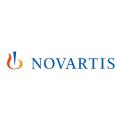
Case C-354/19: Novartis AG v Patent-och registreringsverket
Patent law. Request for preliminary ruling, on the interpretation of Article 3(c) of Regulation No 469/2009 and Article 3(2) of Regulation No 1610/96.
On 17 December 2013, Novartis applied for a supplementary protection certificate (hereinafter: SPC) for medicinal products for the product canakinumab from the Swedish patent office in order to extend the validity of the basic patent. Novartis based its application on decision C (2013) 5600 of the European Commission as the first authorization to place the product on the market in the EEA. The decision amending Commission Decision C (2009) 8375 concerned the medicinal product Ilaris - canakinumab whose therapeutic indications are "cryopryin-associated periodic syndromes, gout and systemic juvenile idiopathic arthritis" according to the summary of product characteristics. Novartis was already the holder of SPCs for the canakinumab product which extended the validity of another basic patent. That previous SPC was based on the marketing authorization as laid down in Decree C (2009) 8375, which refers to this indication. By decision of 24.09.2015, the patent office rejected the request for an SPC. The patent office stated that Novartis had already obtained SPCs for the canakinumab product and that a new SPC for that product could therefore not be issued in accordance with the Regulation. Novartis appealed against this to the court, which was rejected for the same reason.
"1. Is the obligation on a national court to interpret the Directive 2006/115 on rental right and lending right and on certain rights related to copyright in the field of intellectual property (“the Directive”) in the light of the purpose and objective of the Rome Convention and/or the WPPT
"In order to determine whether an SPC may be granted, it is necessary to apply Article 3(c) of Regulation No 469/2009 and Article 3(2) of Regulation No 1610/96. However, the interpretation of those provisions in a case such as the present appears unclear, particularly in view of the fact that the application of the provisions, in the understanding of the Patent- och marknadsöverdomstolen (Patent and Market Court of Appeal), has, in practice, been intended to stimulate research into new therapeutic uses of products already known. The Patent- och marknadsöverdomstolen therefore requests a reply to the following question."
Preliminary question:
"[…] In view of the fundamental purpose which the supplementary protection certificate for medicinal products is intended to fulfil, namely that of stimulating pharmaceutical research in the European Union, does Article 3(c) of Regulation No 469/2009, having regard to Article 3(2) of Regulation No 1610/96, preclude an applicant who has previously been granted a supplementary protection certificate in respect of a product protected by a basic patent in force in respect of the product per se, from being granted a supplementary protection certificate for a new use of the product in a case such as that at issue in the main proceedings in which the new use constitutes a new therapeutic indication which is specifically protected by a new basic patent?"
Read more here.

















